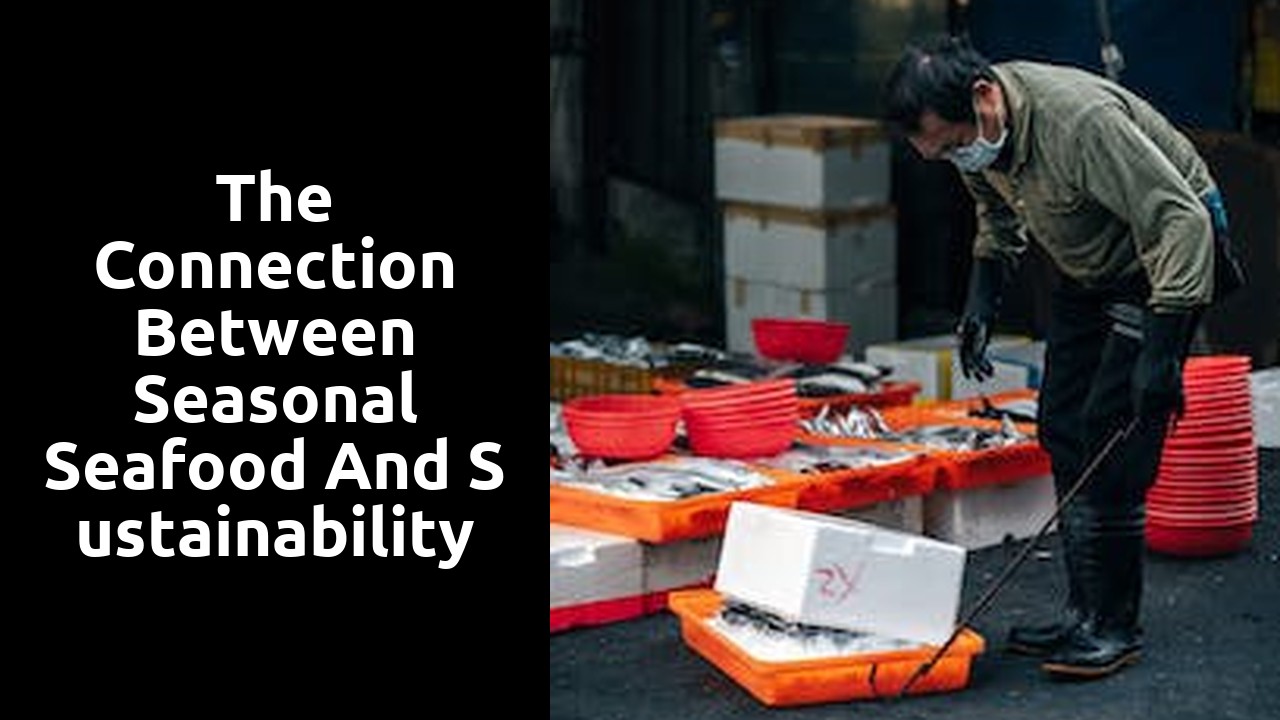
The Connection Between Seasonal Seafood and Sustainability
The Environmental Impact of Eating Seasonal Seafood
Eating seasonal seafood can have a significant positive impact on the environment. By choosing seafood that is in season, you are supporting the natural cycle of marine life and reducing the need for extensive fishing practices. This helps to maintain a balanced ecosystem and ensures that fish populations can replenish themselves naturally.
Furthermore, seasonal seafood is often sourced locally, which means it has a shorter distance to travel to reach your plate. This reduces the carbon emissions associated with transportation and helps to minimize the overall carbon footprint of your meal. By opting for seasonal seafood, you are not only making a sustainable choice for the environment but also supporting local fishermen and their communities.
How Your Food Choices Can Help Save the Ocean
Your food choices can have a significant impact on the health of our oceans. By making conscious decisions about the seafood you consume, you can contribute to the protection and preservation of marine life. One important way to do this is by opting for seafood that is caught or farmed sustainably.
Sustainable seafood refers to fish and shellfish that are harvested in a way that maintains the balance of the ecosystem and minimizes negative environmental impacts. When you choose to eat sustainable seafood, you are supporting fishing practices that prioritize the long-term health of the ocean and its inhabitants. This means selecting species that are not overfished and avoiding those that are caught using destructive methods such as bottom trawling.
Exploring the Benefits of Sustainable Seafood
Sustainable seafood offers numerous benefits for both the environment and consumers. Firstly, choosing sustainable seafood helps to protect and preserve marine ecosystems. By only consuming seafood that is sourced responsibly, we can support sustainable fishing practices that prioritize the long-term health of our oceans. This includes avoiding overfishing, minimizing bycatch, and protecting critical habitats. By doing so, we can help to maintain a healthy balance within marine ecosystems, ensuring the survival of various marine species and the overall health of our oceans.
Additionally, sustainable seafood is often fresher and more flavorful. Many sustainable seafood practices prioritize local, seasonal catches, which means that the seafood is harvested at its peak taste and freshness. This ensures that consumers can enjoy high-quality seafood that is bursting with flavor. Furthermore, sustainable seafood practices often employ techniques that prioritize animal welfare. This means that the seafood is caught and handled in a way that minimizes stress and harm to the fish. By choosing sustainable seafood, consumers can have peace of mind in knowing that their food choices align with their values of ethical and responsible consumption.
The Link Between Seasonal Seafood and a Healthy Ecosystem
One way to support a healthy marine ecosystem is by choosing to eat seasonal seafood. When we consume seafood that is in season, we are allowing for the natural reproductive cycles of fish and other marine species to be maintained. This ensures that fish populations can replenish and thrive, thus maintaining the delicate balance of the ecosystem. By selecting seafood that is currently abundant and being harvested sustainably, we can help prevent overfishing and the depletion of certain species. Moreover, this helps to promote biodiversity and protect the overall health of the ocean. Making the conscious decision to opt for seasonal seafood is a simple but powerful way to contribute towards a healthy and thriving ecosystem.
Supporting Local Fishermen: A Path to Sustainable Seafood
Supporting local fishermen is not only a path to sustainable seafood, but also a way to boost local economies and preserve cultural traditions. By choosing to buy seafood from local fishermen, you are directly supporting their livelihoods and helping to maintain their way of life. This not only benefits the fishermen and their families, but also the entire community.
In addition, purchasing seafood from local fishermen reduces the need for long-distance transportation, which in turn helps to lower carbon emissions. By cutting down on the distance that seafood needs to travel to reach your plate, you are reducing your carbon footprint and contributing to a healthier planet. Furthermore, buying locally caught seafood allows you to have a direct connection with the source of your food, promoting transparency and accountability in the fishing industry.
Reducing Your Carbon Footprint: Choosing Seasonal Seafood
Choosing seasonal seafood can have a significant impact on reducing your carbon footprint. By opting for seafood that is in season, you are supporting a more sustainable and environmentally-friendly food system. Seasonal seafood is sourced locally, which means it travels a shorter distance to reach your plate. This reduces carbon emissions associated with transportation and helps to lower the overall carbon footprint of your meal.
In addition to reducing carbon emissions, choosing seasonal seafood also supports the health of our oceans. By consuming seafood that is in season, you are allowing fish populations to replenish and thrive. This helps to maintain a healthy ecosystem and preserve biodiversity. When we prioritize seasonal seafood, we are actively contributing to the conservation efforts of our oceans, ensuring that future generations can continue to enjoy the abundance of marine life.
Related Links
Seasonal Seafood: Supporting Local FisheriesThe Benefits of Eating Seasonal Seafood
The Cultural Significance of Seasonal Seafood
The Economic Importance of Supporting Seasonal Seafood